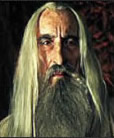Forum
Welcome Guest |
|
|---|---|
 Author Author |
Topic: |
|---|
| Malinornë |
|
||||||||
| dirk_math | |||||||||
| dirk_math |
|
||||||||
| dirk_math |
|
||||||||
| dirk_math |
|
||||||||
| dirk_math |
|
||||||||
| dirk_math |
|
||||||||
| dirk_math |
|
||||||||
| dirk_math |
|
||||||||
| dirk_math |
|
||||||||
| dirk_math |
|
||||||||
| dirk_math |
|
||||||||
| dirk_math |
|
||||||||
| dirk_math |
|
||||||||
| Members Online |









 Quenya workbook: Tengwar lessons
Quenya workbook: Tengwar lessons I'm happy to announce that all the Tengwar lessons have now been added to the workbook
I'm happy to announce that all the Tengwar lessons have now been added to the workbook 































